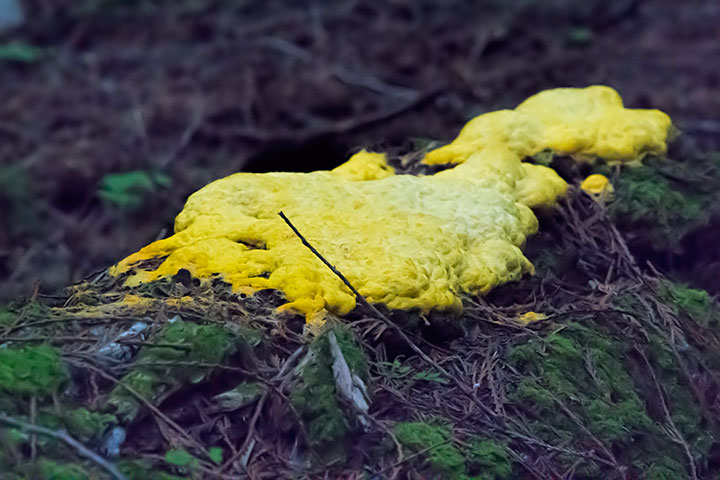A walk through the forest in Kokanee Creek Park revealed two oddities that do not quite fit normal ideas: pinedrops and slime mould.
Pinedrops are a mycotroph, a plant that lacks chlorophyll and so cannot synthesize its own carbohydrates. This might seem to put it at a disadvantage, but it has carved out an ecological niche on the forest floor where plants that must photosynthesize struggle from a paucity of sunlight. Mycotrophs obtain their carbohydrates indirectly from another plant (say, a tree), but through an intermediary, a mycorrhizal fungus. Locally, we have a number of mycotrophs: indian pipe, striped coralroot, spotted coralroot, pinesap, and today’s topic, pinedrops.
There were a half-dozen pinedrops growing adjacent to where another mycotroph, a spotted coralroot, was seen on a previous occasion.

As if mycotrophs aren’t odd enough, consider the slime mould that was seen elsewhere in the Park. Slime moulds are protists, a grab-bag classification for microscopic organisms that are not bacteria, not animals, not plants and not fungi. A slime mould starts life as individual free-ranging cells. Later they amalgamate to form a plasmodium, a blob of protoplasm with only a membrane to keep it together. The mould can move slowly as an entity and is often seen on rotting trees where it engulfs and digests bacteria. Known by various names, such as scrambled-egg slime and dog’s vomit, the slime mould has even inspired a horror movie, The Blob (1958, remake 1988).


My gosh, Alistair…how do you know all this stuff!!! You are absolutely amazing!!!! Love your blog..thank you so much!!
Joan
Joan, granted that your question is rhetorical, it remains that of the few things I do know, the important one is how to learn.